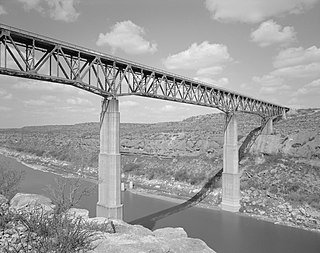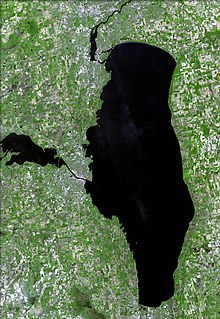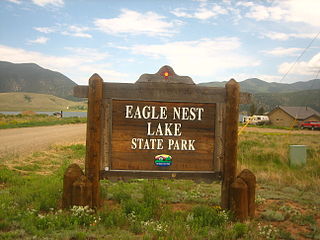| Brantley Lake State Park | |
|---|---|
 Sunset at Brantley Lake State Park, October 2012 | |
| Location | Eddy, New Mexico, United States |
| Coordinates | 32°33′5″N104°23′2″W / 32.55139°N 104.38389°W Coordinates: 32°33′5″N104°23′2″W / 32.55139°N 104.38389°W |
| Area | 3,000 acres (12 km2) |
| Elevation | 3,300 ft (1,000 m) |
| Established | 1989 [1] |
| Named for | Brantley Lake |
| Governing body | New Mexico State Parks Division |
Brantley Lake State Park is a state park of New Mexico, United States, located approximately 12 miles (19 km) north of Carlsbad. [2] The park takes its name from Brantley Lake, a man-made reservoir created when Brantley Dam was built across the Pecos River in the 1980s. The lake is the southernmost lake in New Mexico, and it is popular for boating and fishing. It has a surface area of approximately 4,000 acres (16 km2), but that varies due to the inconsistent flow of the Pecos River and the arid climate in which the lake is located.

State parks are parks or other protected areas managed at the sub-national level within those nations which use "state" as a political subdivision. State parks are typically established by a state to preserve a location on account of its natural beauty, historic interest, or recreational potential. There are state parks under the administration of the government of each U.S. state, some of the Mexican states, and in Brazil. The term is also used in the Australian state of Victoria. The equivalent term used in Canada, Argentina, South Africa and Belgium, is provincial park. Similar systems of local government maintained parks exist in other countries, but the terminology varies.

New Mexico is a state in the Southwestern region of the United States of America; its capital and cultural center is Santa Fe, which was founded in 1610 as capital of Nuevo México, while its largest city is Albuquerque with its accompanying metropolitan area. It is one of the Mountain States and shares the Four Corners region with Utah, Colorado, and Arizona; its other neighboring states are Oklahoma to the northeast, Texas to the east-southeast, and the Mexican states of Chihuahua to the south and Sonora to the southwest. With a population around two million, New Mexico is the 36th state by population. With a total area of 121,590 sq mi (314,900 km2), it is the fifth-largest and sixth-least densely populated of the 50 states. Due to their geographic locations, northern and eastern New Mexico exhibit a colder, alpine climate, while western and southern New Mexico exhibit a warmer, arid climate.

Carlsbad is a city in and the county seat of Eddy County, New Mexico, United States. As of the 2010 census, the city population was 26,138. Carlsbad is centered at the intersection of U.S. Routes 62/180 and 285, and is the principal city of the Carlsbad-Artesia Micropolitan Statistical Area, which has a total population of 55,435. Located in the southeastern part of New Mexico, Carlsbad straddles the Pecos River and sits at the eastern edge of the Guadalupe Mountains.
The lake is stocked with bass, white bass, walleye, catfish, bluegill, carp, and crappie, however officials have recently detected high levels of DDT in the fish and the State Parks Department is recommending that the fish not be eaten.
Bass is a name shared by many species of fish. The term encompasses both freshwater and marine species, all belonging to the large order Perciformes, or perch-like fishes. The word bass comes from Middle English bars, meaning "perch".

The white bass, silver bass, or sand bass is a freshwater fish of the temperate bass family Moronidae. It is the state fish of Oklahoma.

The walleye, also called the yellow pike, is a freshwater perciform fish native to most of Canada and to the Northern United States. It is a North American close relative of the European zander, also known as the pikeperch. The walleye is sometimes called the yellow walleye to distinguish it from the blue walleye, which is a subspecies that was once found in the southern Ontario and Quebec regions, but is now presumed extinct. However, recent genetic analysis of a preserved (frozen) 'blue walleye' sample suggests that the blue and yellow walleye were simply phenotypes within the same species and do not merit separate taxonomic classification.
The park has 51 developed campsites with electricity, shower facilities, a playground, a visitor center, and other amenities.













